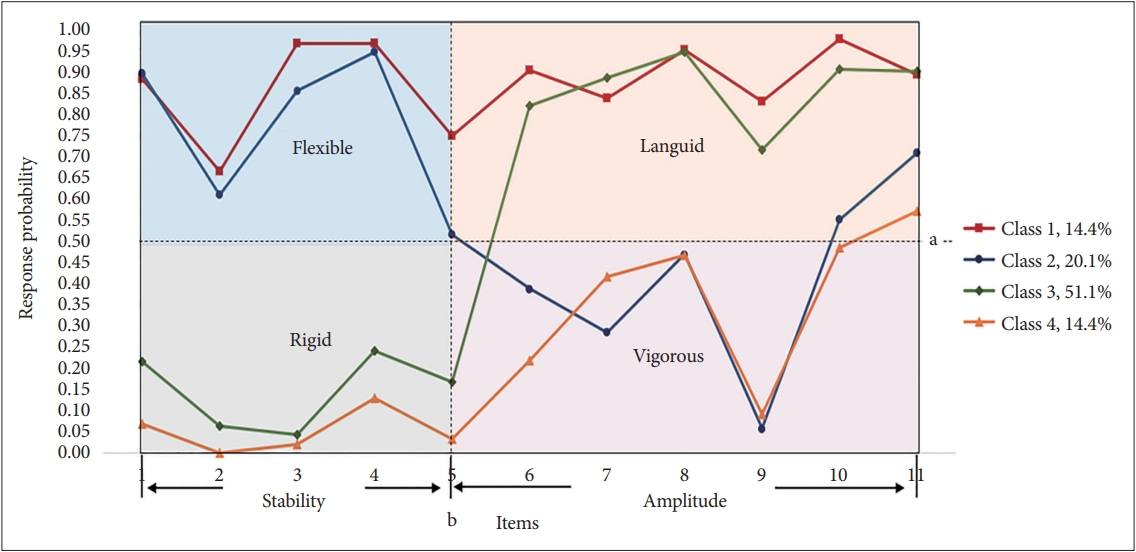2. Rosa D, Terzoni S, Dellafiore F, Destrebecq A. Systematic review of shift work and nurses’ health. Occup Med (Lond) 2019;69:237-243.


3. Bagheri Hosseinabadi M, Ebrahimi MH, Khanjani N, Biganeh J, Mohammadi S, Abdolahfard M. The effects of amplitude and stability of circadian rhythm and occupational stress on burnout syndrome and job dissatisfaction among irregular shift working nurses. J Clin Nurs 2019;28:1868-1878.


5. Espie CA, Pawlecki B, Waterfield D, Fitton K, Radocchia M, Luik AI. Insomnia symptoms and their association with workplace productivity: cross-sectional and pre-post intervention analyses from a large multinational manufacturing company. Sleep Health 2018;4:307-312.


6. Zare R, Choobineh A, Keshavarzi S. Association of amplitude and stability of circadian rhythm, sleep quality, and occupational stress with sickness absence among a gas company employees—A cross sectional study from Iran. Saf Health Work 2017;8:276-281.


7. Kongsted A, Nielsen AM. Latent class analysis in health research. J Physiother 2017;63:55-58.


8. Lo Y, Mendell NR, Rubin DB. Testing the number of components in a normal mixture. Biometrika 2001;88:767-778.

9. Marquié JC, Tucker P, Folkard S, Gentil C, Ansiau D. Chronic effects of shift work on cognition: findings from the VISAT longitudinal study. Occup Environ Med 2015;72:258-264.


10. Reid KJ, McGee-Koch LL, Zee PC. Cognition in circadian rhythm sleep disorders. Prog Brain Res 2011;190:3-20.


12. Celeux G, Soromenho G. An entropy criterion for assessing the number of clusters in a mixture model. J Classif 1996;13:195-212.

13. Costa G, Lievore F, Casaletti G, Gaffuri E, Folkard S. Circadian characteristics influencing interindividual differences in tolerance and adjustment to shiftwork. Ergonomics 1989;32:373-385.


14. Di Milia L, Smith PA, Folkard S. Refining the psychometric properties of the circadian type inventory. Pers Individ Differ 2004;36:1953-1964.

15. Folkard S, Monk TH, Lobban MC. Towards a predictive test of adjustment to shift work. Ergonomics 1979;22:79-91.


16. Meijman TF, Mulder G. Psychological aspects of workload. In: Drenth PJD, Henk T, Charles D, editor. Handbook of work and organizational psychology, volume 4. Hove: Psychology Press, 1998, p. 5-33.
17. Jafari Roodbandi A, Choobineh A, Daneshvar S. Relationship between circadian rhythm amplitude and stability with sleep quality and sleepiness among shift nurses and health care workers. Int J Occup Saf Ergon 2015;21:312-317.


20. D’Ettorre G, Pellicani V, Caroli A, Greco M. Shift work sleep disorder and job stress in shift nurses: implications for preventive interventions. Med Lav 2020;111:195-202.


21. Sun Q, Ji X, Zhou W, Liu J. Sleep problems in shift nurses: a brief review and recommendations at both individual and institutional levels. J Nurs Manag 2019;27:10-18.


22. Peifer C, Syrek C, Ostwald V, Schuh E, Antoni C. Thieves of flow: how unfinished tasks at work are related to flow experience and wellbeing. J Happiness Stud 2020;21:1641-1660.

23. Leyva-Vela B, Jesús Llorente-Cantarero F, Henarejos-Alarcón S, Martínez-Rodríguez A. Psychosocial and physiological risks of shift work in nurses: a cross-sectional study. Cent Eur J Public Health 2018;26:183-189.


25. Letvak SA, Ruhm CJ, Gupta SN. Nurses’ presenteeism and its effects on self-reported quality of care and costs. Am J Nurs 2012;112:30-38.
28. Oliveira JF, Santos AMD, Primo LS, Silva MRSD, Domingues ES, Moreira FP, et al. Job satisfaction and work overload among mental health nurses in the south of Brazil. Cien Saude Colet 2019;24:2593-2599.

31. Caruso CC. Negative impacts of shiftwork and long work hours. Rehabil Nurs 2014;39:16-25.


32. Zito M, Cortese CG, Colombo L. Nurses' exhaustion: the role of flow at work between job demands and job resources. J Nurs Manag 2016;24:E12-E22.


34. Bakker AB. The work-related flow inventory: construction and initial validation of the WOLF. J Vocat Behav 2008;72:400-414.

35. Demerouti E, Bakker AB, Sonnentag S, Fullagar CJ. Work‐related flow and energy at work and at home: a study on the role of daily recovery. J Organ Behav 2012;33:276-295.

36. Qi HY, Shi XL, Li L, Yang L, Fan F. Reliability and validity of the Chinese version of circadian type inventory in nurses on shifts. Chin J Clin Psychol 2019;27:258-262.
37. Koopman C, Pelletier KR, Murray JF, Sharda CE, Berger ML, Turpin RS, et al. Stanford presenteeism scale: health status and employee productivity. J Occup Environ Med 2002;44:14-20.


38. Cicolini G, Della Pelle C, Cerratti F, Franza M, Flacco ME. Validation of the Italian version of the stanford presenteeism scale in nurses. J Nurs Manag 2016;24:598-604.


39. Zhao F, Dai JM, Yan SY, Yang PD, Fu H. Reliability and validity of the Chinese version of the Impaired Health Productivity Scale (SPS-6). In Chinese. Chinese Journal of lndustrial Hygiene Occupational Diseases 2010;679-682.
43. Ying L, Fitzpatrick JM, Philippou J, Huang W, Rafferty AM. The organisational context of nursing practice in hospitals in China and its relationship with quality of care, and patient and nurse outcomes: a mixedmethods review. J Clin Nurs 2021;30:3-27.


44. Banks C, Pearson S. Personality, staff attitudes and their association with absenteeism and presenteeism in Australian public sector hospital- based nurses: a cross-sectional study. J Nurs Manag 2021;29:2639-2646.


45. Natvik S, Bjorvatn B, Moen BE, Magerøy N, Sivertsen B, Pallesen S. Personality factors related to shift work tolerance in two- and three-shift workers. Appl Ergon 2011;42:719-724.


46. Di Milia L, Smith PA, Folkard S. A validation of the revised circadian type inventory in a working sample. Pers Individ Differ 2005;39:1293-1305.

47. Barker LM, Nussbaum MA. Fatigue, performance and the work environment: a survey of registered nurses. J Adv Nurs 2011;67:1370-1382.


48. Rainbow JG, Drake DA, Steege LM. Nurse health, work environment, presenteeism and patient safety. West J Nurs Res 2020;42:332-339.


49. Brownlow JA, Miller KE, Gehrman PR. Insomnia and cognitive performance. Sleep Med Clin 2020;15:71-76.


51. Wittmann M, Schreiber W, Landgrebe M, Hajak G. Circadian rhythms and depression. Fortschr Neurol Psychiatr 2018;86:308-318.












